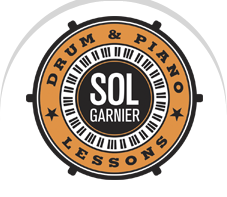When we look at a drum set we are looking at an orchestra. A percussion orchestra. This blog in several part will be talking about orchestration. The orchestra of the drum set.
Let’s start with the snare drum. It is, for the drummer the beginning of everything. We develop speed, accuracy, versatility on the skin of that instrument. It is also a double instrument. It can be played with the wire of the snares on or off, producing two very different and distinct sounds. But it can be much more than that. We use it frequently with the sticks across the drum head striking the rim. That technique has a few names, I call it the “Click”. Stewart Coppeland of “The Police” played it masterfully on a songs like Walking on the moon.
But that is not all you can do with a snare drum. You can hit the rim without having the stick across the head. It gives a very dry clicking sound. I sometimes substitute that from a hi hat. It can also be played with the fingers while your hand is holding the stick across the head. Bernard Purdie revealed this way of doing things on a video you can find on YouTube.
You can also get two different sounds if you play it with a stick while the other hand presses on the skin or not. I like that way. It is subtle but powerful.
As for playing with the wires on, a snare has a different sound depending on where you hit it. The center is fatter and lower compare to the edge of the surface that is usually higher and with a more aggressive tone.
And then, there is the rimshot. A rimshot is when you hit simultaneously the skin and the rim with the stick. It produces a very loud sound. It is the way most rock drummer land the “2” and “4” on all those pop songs we hear on the radio.
Now, here is the kicker. I just talked about let’s say 10 different ways of playing the snare drum. But there is much, much more. The way Steve Gadd gets more mileage out of the instrument is by playing beautifully out of tune. Yes, his snare is out of tune. But! But on that square inch is a dry fat sound, on that other square inch is a clean ring, on that third square inch is yet another variations. And, during the gig, he will play this or that square inch, supporting the music like a painter who would chose a dash of blue for this part and a dash of red for that one.
If you need to understand orchestration and explore the possibilities of the drum set, start with the snare drum. Tune it different ways, play it with different techniques, different tools (Brushes, Hot Rods, Blasticks, your hands, etc…) and have fun surprising yourself with that wonderful instrument.
